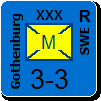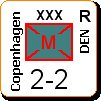warspite1
Posts: 41353
Joined: 2/2/2008
From: England
Status: offline

|
Okay - here is the note I sent to Steve previously
Firstly - let me say that I think the write ups are secondary to the main issue - i.e. getting a working game on the market.
However, I think that if write ups are going to be included - and personally I believe that they are a superb addition to the game - then they need to be done "properly".
Let me be clear, I am not saying that I believe my write ups are necessarily the way to go and am happy to listen to any criticism but I am generally happy with the approach I have sought to take i.e. a structure for the write ups so that for each ship I will get:
- Key Facts and Figures
- Brief background as to the reason the ships were required in the first place, class, no of ships etc
- WWII service history only - encompassing brief details of theatres operated in and only expanded slightly in the interests of brevity where there is a more famous or interesting episode e.g. River Plate, Hunt the Bismarck etc
- Fate
Reading the existing write ups of the three Australian County class sisters, I think they are simply too brief to give the reader any real insight.
.P A County Class Cruiser, the HMAS Shropshire was commissioned by the Royal Navy in September 1929, but
was transferred to the Australian Navy after the HMAS Canberra was sunk in 1942. In the Royal Navy she
served in the South Atlantic as a merchant escort. In the Australian Navy she saw action in the battles of
Surigao Strait and Linyagen Gulf.
.P She was decommissioned in 1949. She was supposed to be renamed
Canberra after the HMAS Canberra was lost, but due to the fact that the US Navy had a ship with that name,
she kept her old name. This was the only ship ever to be named after Shropshire, England.
If the author would be agreeable, I would like to see these expanded in the way that her 10 sisters have been written up.
(I have added my Dorsetshire write up at the bottom of this post).
Another example.
For the write up of HMNZS Gambia:
- Armour detail is missing
- There are references to Royal British Navy? and British Navy?
- The second paragraph simply repeats the facts section in more words - no value added.
HMNZS Gambia was originally commissioned into the Royal British Navy as a Fiji Class Cruiser, but
was decommissioned into the New Zealand Navy in September 1943. Her battle honours include
Sabang, Okinawa, and Japan. She was handed back to the British Navy in February 1946. Her first
mission after rejoining the British Navy was to transport large quantities of gold bullion from Australia to
England.
.P She was finally decommissioned in December 1968. Her engines gave her a total of
80,000 hp, and a top speed of 32 knots. Her main armament was a total of 12 152mm guns. At full load she
had a displacement of 9,000 tons.
Last example - USS Enterprise
Commissioned in May 1938, the USS Enterprise was the sixth aircraft carrier to enter the lists of the US Navy.
She would serve throughout the entire war, participating in almost every big battle in the Pacific. Although not
in port during the Japanese attack on Pearl Harbour, bombers of the Enterprise did participate in aerial
battles over the port, and 6 of them were lost. The USS Enterprise was the flagship of Admiral Spruance’s
fleet during the battle of Midway.
.P She would go on to earn a total of 20 battle stars during her operations in
WWII, the most of any ship in the US Navy. The Enterprise was finally decommissioned in February 1947.
.P She was the only ship outside the Royal British Navy to earn the highest decoration of the British Admiralty,
the British Admiralty Pennant.
You posted Norman42 write ups of three French ships on Saturday. Personally I would have added a section on why they were built, class etc but in my view these were absolutely fine. They were brief - but only because the ships did not particularly warrant more and moreover they each had the same structure - which I think is very important.
I`m afraid what I know about computers is not worth knowing so I cannot help on the technical side but am keen to see the historical aspects done in a way that really give the reader - regardless of prior WWII knowledge, a real taster for what the unit he is commanding is all about, what she did and what happened to her.
Dorsetshire write up
.P HMS Dorsetshire and her sisters were the first heavy cruisers built right
up to the 1922 Washington Treaty Naval limits (standard displacement 10,000
tons and 8-inch main armament). These limits had been set as the Royal Navy
already had cruisers this large (Hawkins Class).
.P Athough Britain needed more numerous smaller vessels, the building of large
cruisers between the wars by Japan had to be countered by the Royal Navy - the
County class were the result. There were 13 ships built including two for the
Royal Australian Navy. After the sinking of one of these - HMAS Canberra - the
British government agreed to the transfer of HMS Shropshire to the Royal
Australian Navy.
.P World War II gave the County class the opportunity to prove themselves as
excellent all-round vessels, noted for their combination of range, strength,
sea-worthiness and weight of fire.
.P HMS Dorsetshire was completed in 1930. In December 1939, a couple months
after war was declared, Dorsetshire was transferred from the China station to
Ceylon to link up with her sister ship Cornwall and the carrier Hermes - Force
I. Force I took part in the search for the pocket-battleship Graf Spee.
.P She operated in the South Atlantic for a short while before returning to
the UK in May. She quickly departed for West Africa and in June, set out to
follow the French battleship Richelieu which had left Dakar for Casablanca.
The Richelieu was eventually ordered to return to Dakar and Dorsetshire
continued to monitor French Naval Forces off Dakar throughout July.
.P In September 4 she had minor repairs in South Africa before returning to
Freetown. By November she was operating in the Indian Ocean and bombarding
Italian Somaliland. Thereafter a further spell in dock in South Africa was
followed by a patrol in the South Atlantic looking for the Admiral Scheer.
.P Dorsetshire`s most high profile engagement of WWII was the hunt for the
battleship Bismarck that had escaped into the North Atlantic in May 1941.
It was Dorsetshire that on 27 May was ordered to torpedo the crippled Bismarck
at the end of the battle. Dorsetshire recovered 110 of Bismarck's crew from
the sea, before being forced break off the rescue because of the presence of
a U-boat.
.P After this Dorsetshire undertook a further period of convoy escort and in
1942 she was assigned to the Eastern Fleet in the Indian Ocean. The Japanese
1st Air Fleet, fresh from 5 months of uninterrupted victory since Pearl Harbor
entered the Indian Ocean for what was known as the Indian Ocean raid. During
this raid, Dorsetshire and her sister ship Cornwall were caught in the open
and without air cover. They were attacked by carrier based aircraft south-west
of Ceylon on 5 April 1942. Dorsetshire was hit by ten bombs and sank quickly.
234 crewmen died. Cornwall was hit eight times and sank about ten minutes
later.
|
 Printable Version
Printable Version
















 New Messages
New Messages No New Messages
No New Messages Hot Topic w/ New Messages
Hot Topic w/ New Messages Hot Topic w/o New Messages
Hot Topic w/o New Messages Locked w/ New Messages
Locked w/ New Messages Locked w/o New Messages
Locked w/o New Messages Post New Thread
Post New Thread